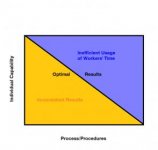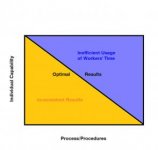ttrager
Cast Iron
- Joined
- Jul 23, 2015
- Location
- East Side / Detroit
I'm not going to belaboring why I need to ask what I consider a basic question. I'm simply going to ask and calibrate myself if need be based on feedback.
I work in a small shop (20 people). Historically, adoption of a Quality Management System followed by ISO 9001 Certification has been . . . spotty. We have some really well qualified machinists mind you, no issues there, and our customer complaints and returns are pretty low.
I'm re-qualifying the criteria by which a Corrective Action is, or is not generated. Call it "refresher training".
DO:
Criteria triggering a CAR: When a Customer Complaint is received. Is this a Yes or No in your shop?
It doesn't matter if the problem turns out to be on the Customer end, because that determination itself comes from Root Cause investigation on a CAR, followed by identification of corrective/preventive actions (if any) for either our shop, or in cases with ISO certified customers, Corrective Actions sent to them.
DO NOT:
Wing it word of mouth. Someone gets a customer complaint phone call, some mix of people talk to each other and the customer, "stuff" gets figured out in an infinity of configurations (rework, no rework, replacements sent no cost or costed, workholding changes on our floor needed or not, etc.).
After everyone has "done stuff" and everything is "fixed", as an afterthought consider backdating a CAR entry in the Corrective Actions system as a paperwork exercise, assuming everyone remembers what they talked through, are now done with, and have moved on to other work.
In other words:
You do have to make a decision whether something justifies a CAR or not. You can't CAR every little thing, that's not the point to Corrective Actions. A Customer Complaint however is, in my opinion, typically a straight forward trigger: Generate a CAR, document the steps and findings.
Alternately, as example, if there is an internal catch pre-shipment, there is more flexibility in making that decision. If the process is working, evidenced by the catch, there might not be a need to generate a CAR. The process worked, problem was caught, double check nothing new/unreasonable is involved and if not don't bother with a CAR.
If, however, something new is identified requiring action be taken (training, workholding, heat-treating, sequence of machining changed, whatever), then a CAR is needed for an internal issue because an action is necessary to enable a fix.
Is this high-level reasoning reasonably in-line with how you make decisions on when to, and when not to, create a Corrective Action?
I work in a small shop (20 people). Historically, adoption of a Quality Management System followed by ISO 9001 Certification has been . . . spotty. We have some really well qualified machinists mind you, no issues there, and our customer complaints and returns are pretty low.
I'm re-qualifying the criteria by which a Corrective Action is, or is not generated. Call it "refresher training".
DO:
Criteria triggering a CAR: When a Customer Complaint is received. Is this a Yes or No in your shop?
It doesn't matter if the problem turns out to be on the Customer end, because that determination itself comes from Root Cause investigation on a CAR, followed by identification of corrective/preventive actions (if any) for either our shop, or in cases with ISO certified customers, Corrective Actions sent to them.
DO NOT:
Wing it word of mouth. Someone gets a customer complaint phone call, some mix of people talk to each other and the customer, "stuff" gets figured out in an infinity of configurations (rework, no rework, replacements sent no cost or costed, workholding changes on our floor needed or not, etc.).
After everyone has "done stuff" and everything is "fixed", as an afterthought consider backdating a CAR entry in the Corrective Actions system as a paperwork exercise, assuming everyone remembers what they talked through, are now done with, and have moved on to other work.
In other words:
You do have to make a decision whether something justifies a CAR or not. You can't CAR every little thing, that's not the point to Corrective Actions. A Customer Complaint however is, in my opinion, typically a straight forward trigger: Generate a CAR, document the steps and findings.
Alternately, as example, if there is an internal catch pre-shipment, there is more flexibility in making that decision. If the process is working, evidenced by the catch, there might not be a need to generate a CAR. The process worked, problem was caught, double check nothing new/unreasonable is involved and if not don't bother with a CAR.
If, however, something new is identified requiring action be taken (training, workholding, heat-treating, sequence of machining changed, whatever), then a CAR is needed for an internal issue because an action is necessary to enable a fix.
Is this high-level reasoning reasonably in-line with how you make decisions on when to, and when not to, create a Corrective Action?



